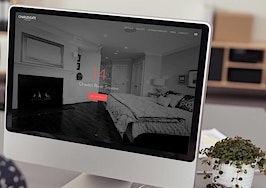- Floorplan mapping can be important aspect of marketing collateral for luxury sales agents
- Matterport has done terrific things for 3D home tours but significant competitors are emerging
- The value of room sizes, layout and architectural data is often lost among staging, paint colors and other home characteristics
Have suggestions for products that you’d like to see reviewed by our real estate technology expert? Email Craig Rowe.
The pitch
iGuide is virtual tour, floor-plan creation and house-mapping software.
Platform: Web-based, browser-agnostic, responsive
Ideal for: Any agent, team or brokerage selling luxury property, targeting long-distance buyers or wanting to advance property marketing options
Top selling points
- Visual tours and interactive floor plans created simultaneously
- Includes easy embed links for tours and related home data
- Simple room measurement tool ideal for interior design, staging and contractors
Things to consider
The company can make about 10 of its patented cameras per month, so ramp up has been gradual in the states, and demand is high.
The close
This is not a virtual tour company using Matterport cameras.
iGuide was developed by Canadian company Planitar, and its cameras and software are its own patented technologies.
At the heart of iGuide’s value proposition is its multi-view tour interface.
The laser-guided room scanning cameras create an interactive floor plan as they rotate around rooms capturing visuals.
It’s like an NFL broadcast team. You have an analyst and a color commentator.
You can cursor your way around a room, up, down, forward and back. This part you’ve seen before.
However, the adjacent floor plan view shows you exactly where you are standing in each room. A single dot displaying a “radar cone” spins around as you do.
Each dot on the floor plan represents that room’s respective vantage point. You can teleport to each space in the home by selecting a spot and by using tabs to navigate floors.
Beyond the immersive viewing experience, iGuide offers a number of ancillary tools, like a laser-accurate measuring tool, a snapshot feature and a gallery of home images.
Embedding a completed tour in your website is easy stuff. iGuide’s engineer-founders built the front-end to satisfy their own goals for simplicity.
Because the iGuide cameras are capturing much more than visuals, the software provides an array of branded marketing collateral. Technical floorplans, individual room dimensions and usable and gross floor area breakdowns are part of every package.
iGuide also provides users with a feature sheet builder for building marketing flyers. The data is great — the design, not so much. Thus, I recommend using your own flyer designs and websites to link and embed iGuide’s tours.
[Tweet “At the heart of iGuide’s value proposition is its multi-view tour interface.”]
Nevertheless, these tours are engrossing.
After a tour is assembled, which can be done in about an hour for a 3,000-square-foot home, it can be used in perpetuity.
Agents can encourage buyers to use iGuide during escrow instead of scheduling multiple walk-throughs to measure rooms and windows. The same for interior designers and contractors.
Inspectors and appraisers would also find value in its data-rich visuals.
Because the tour is published to an open URL, it can be viewed on mobile devices.
Embedding a completed tour in your website is easy stuff, as iGuide’s engineer-founders built the front-end to satisfy their own goals for simplicity.
iGuide isn’t going to win any awards for stunning visuals surrounding its tours and floor plans, but it doesn’t need to. Users will be having way too much fun spinning around rooms and measuring walk-in closets to worry about logo placement and tweet potential.
Has the virtual tour finally been perfected? Let us know.
Have a technology product you would like to discuss? Email Craig Rowe.



